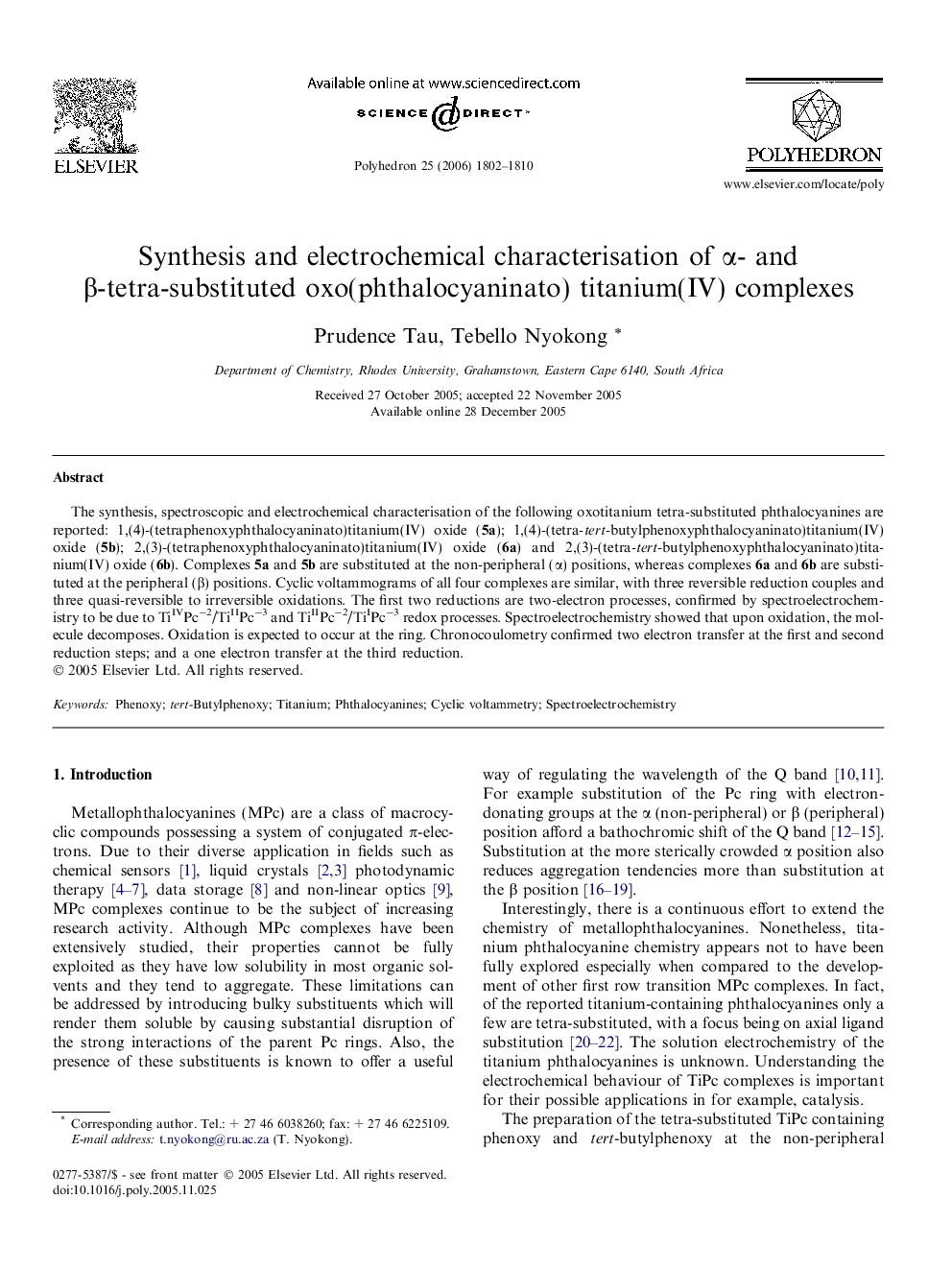| Article ID | Journal | Published Year | Pages | File Type |
|---|---|---|---|---|
| 1339206 | Polyhedron | 2006 | 9 Pages |
The synthesis, spectroscopic and electrochemical characterisation of the following oxotitanium tetra-substituted phthalocyanines are reported: 1,(4)-(tetraphenoxyphthalocyaninato)titanium(IV) oxide (5a); 1,(4)-(tetra-tert-butylphenoxyphthalocyaninato)titanium(IV) oxide (5b); 2,(3)-(tetraphenoxyphthalocyaninato)titanium(IV) oxide (6a) and 2,(3)-(tetra-tert-butylphenoxyphthalocyaninato)titanium(IV) oxide (6b). Complexes 5a and 5b are substituted at the non-peripheral (α) positions, whereas complexes 6a and 6b are substituted at the peripheral (β) positions. Cyclic voltammograms of all four complexes are similar, with three reversible reduction couples and three quasi-reversible to irreversible oxidations. The first two reductions are two-electron processes, confirmed by spectroelectrochemistry to be due to TiIVPc−2/TiIIPc−3 and TiIIPc−2/TiIPc−3 redox processes. Spectroelectrochemistry showed that upon oxidation, the molecule decomposes. Oxidation is expected to occur at the ring. Chronocoulometry confirmed two electron transfer at the first and second reduction steps; and a one electron transfer at the third reduction.
Graphical abstractElectrochemical studies of oxotitanium phthalocyanines revealed three reversible reduction couples and three quasi-reversible to irreversible oxidations; the first two reductions are two-electron processes which were confirmed by spectroelectrochemistry to be due to TiIVPc−2/TiIIPc−3 and TiIIPc−2/TiIPc−3 redox processes.Figure optionsDownload full-size imageDownload as PowerPoint slide
